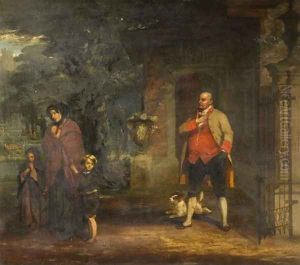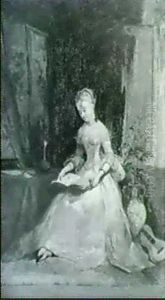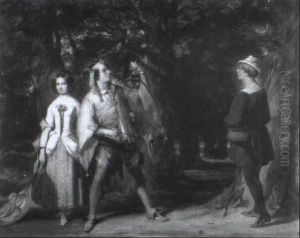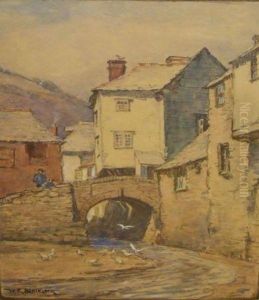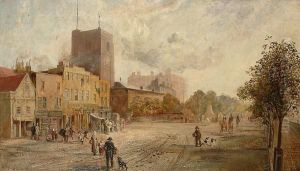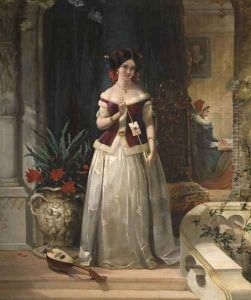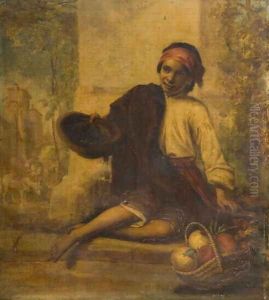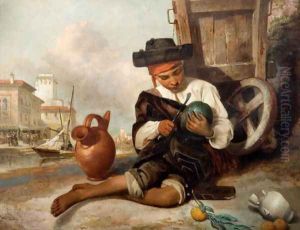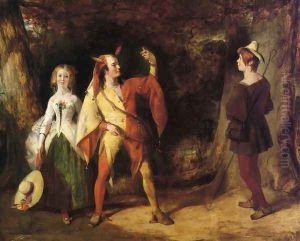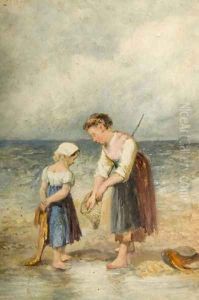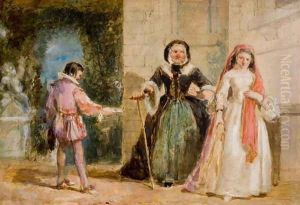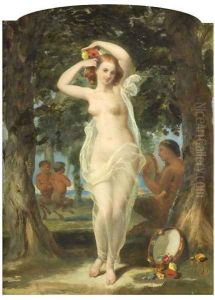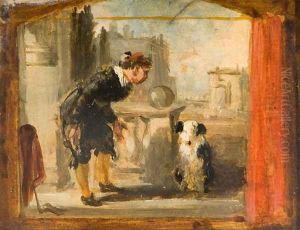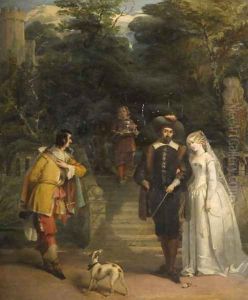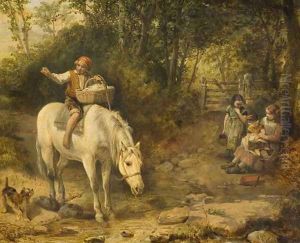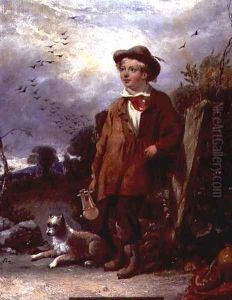William Knight Keeling Paintings
William Knight Keeling, born in 1807, was a British artist known for his genre and historical paintings. Keeling's career spanned a period in the 19th century when art was undergoing significant transformations, reflecting the broader cultural and social changes of the Victorian era. Despite not being as widely recognized as some of his contemporaries, Keeling's work provides valuable insights into the aesthetic and thematic concerns of his time.
Keeling showed an early interest in art and pursued his passion by studying at the Royal Academy Schools in London, an institution that played a crucial role in the development of many British artists of the period. His education there allowed him to refine his technique and gain exposure to the works of other emerging and established artists.
Throughout his career, William Knight Keeling was particularly admired for his ability to capture the intricacies of human emotions and the nuances of social interaction through his genre paintings. These works often depicted scenes of everyday life, offering glimpses into the private and public spheres of Victorian England. His historical paintings, on the other hand, allowed him to explore themes of heroism, morality, and the human condition, often drawing upon well-known historical events or literary sources for subject matter.
Despite his talents, Keeling never achieved the same level of fame as some of his peers. However, his contributions to Victorian art were nonetheless significant. He exhibited regularly at the Royal Academy and other venues, receiving moderate acclaim for his work. His paintings are characterized by their detailed realism, thoughtful composition, and the use of light to enhance the emotional depth of the scenes he portrayed.
William Knight Keeling's legacy is that of a dedicated artist who captured the essence of his time through his meticulous and evocative paintings. Passing away in 1886, he left behind a body of work that continues to be appreciated by art historians and collectors for its insight into the Victorian era and its artistic merit.
